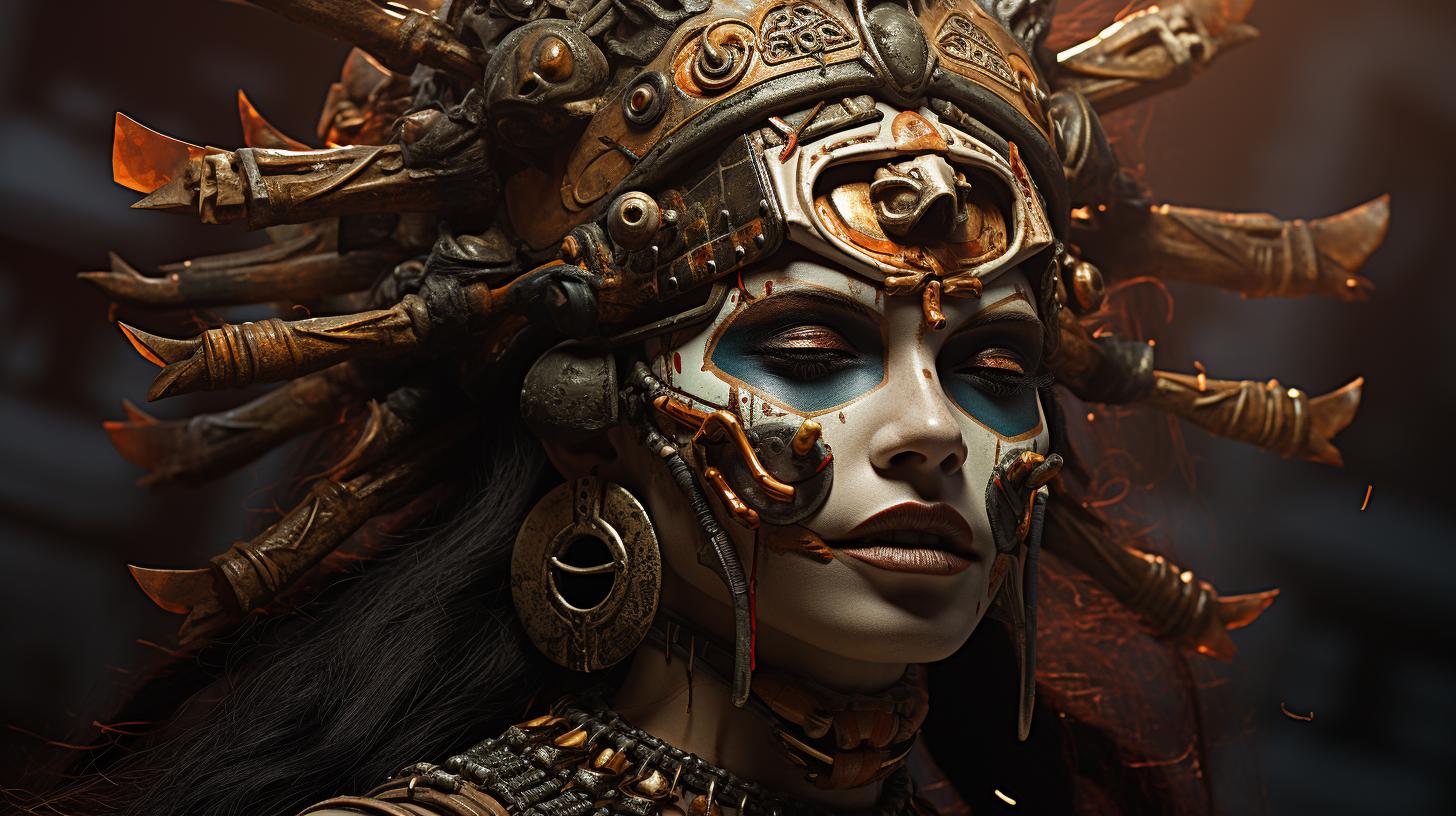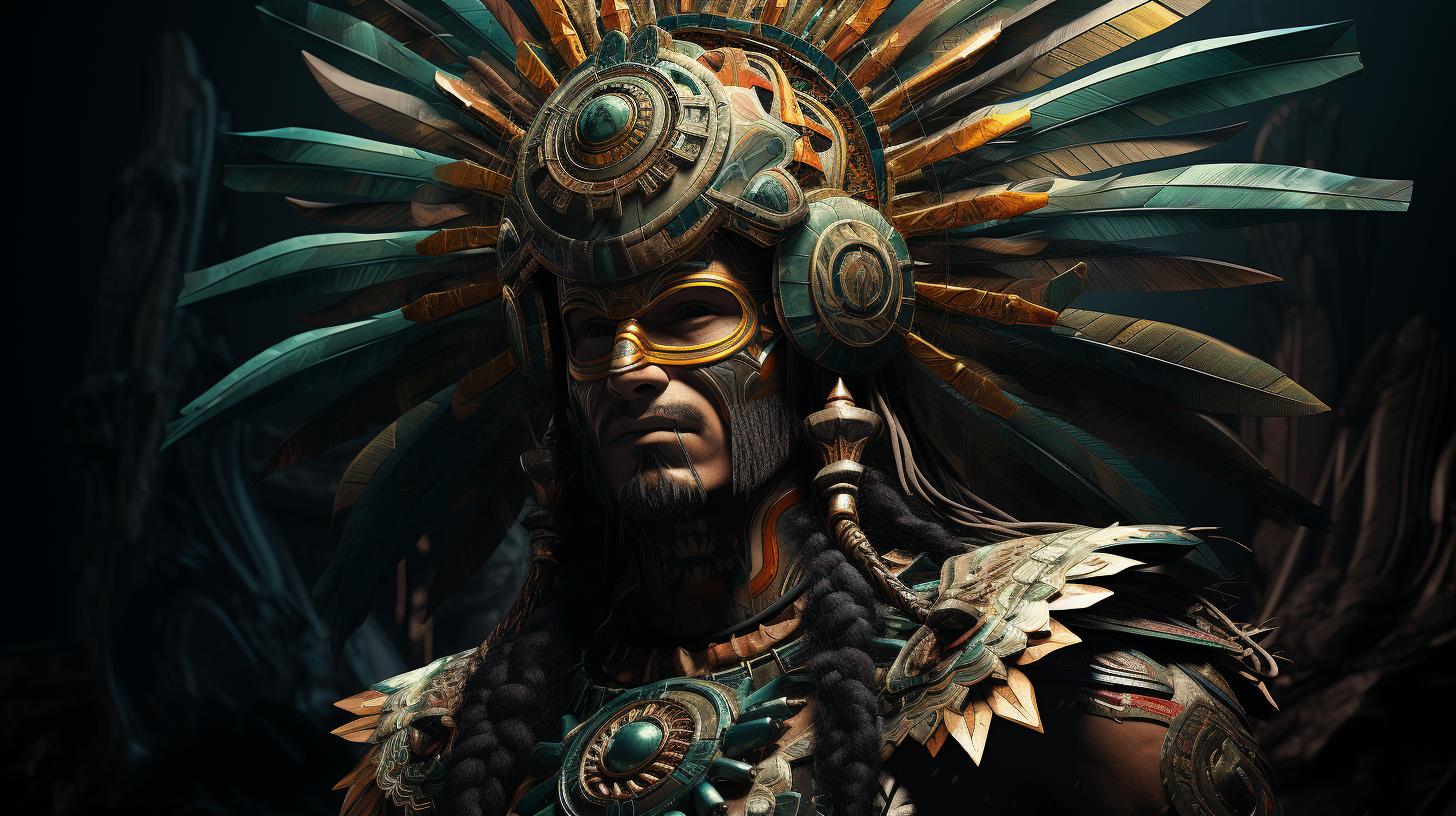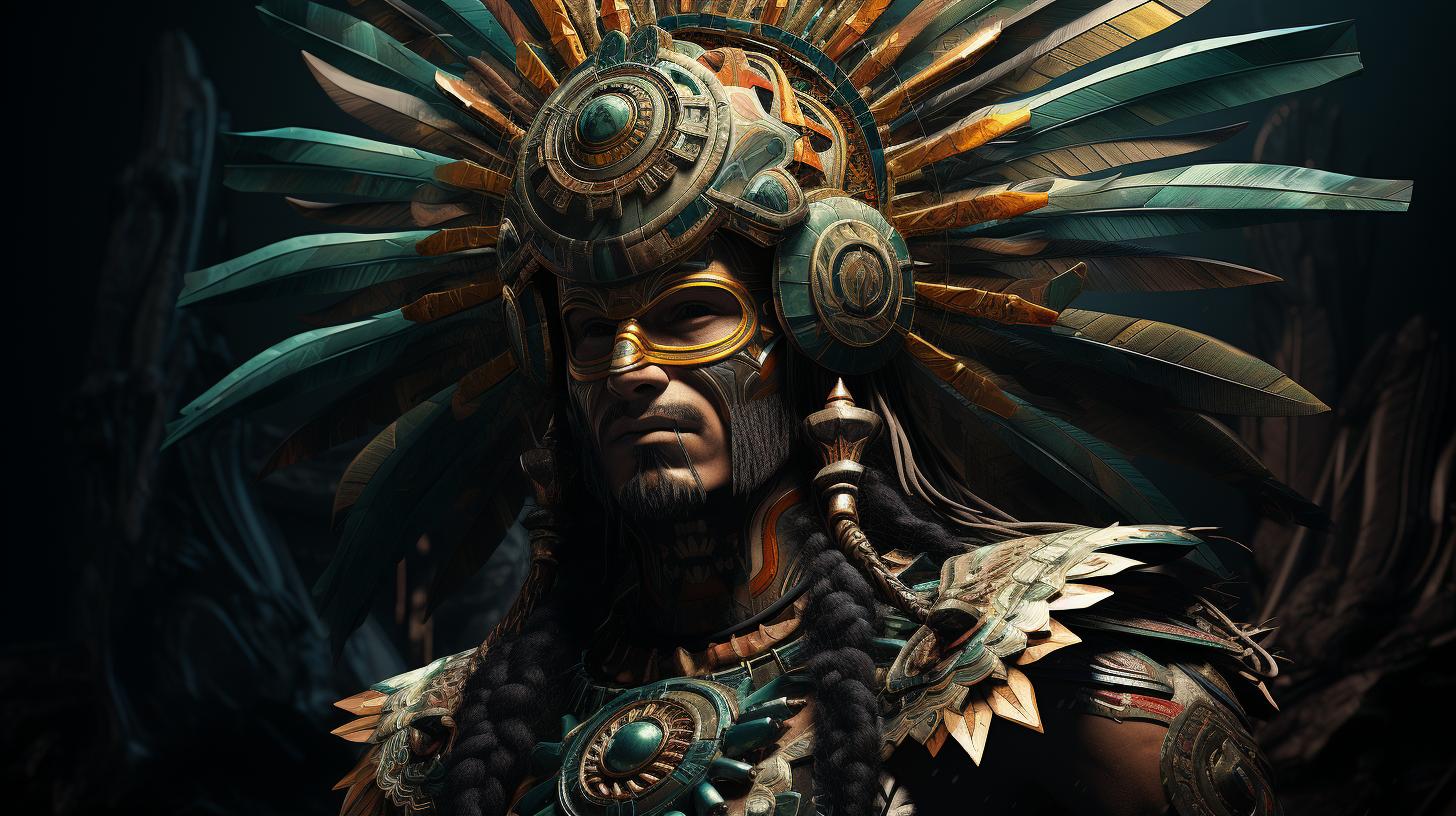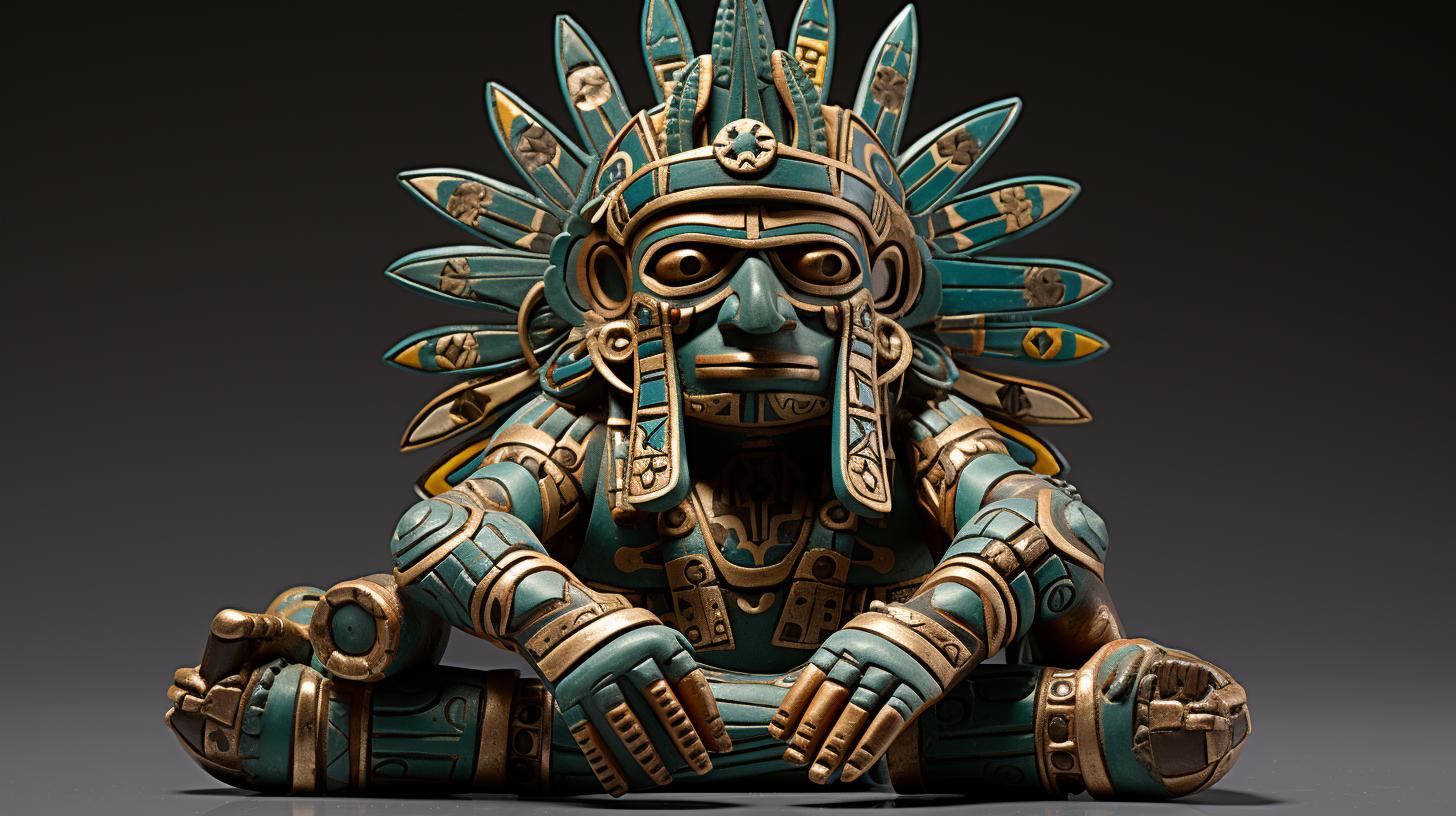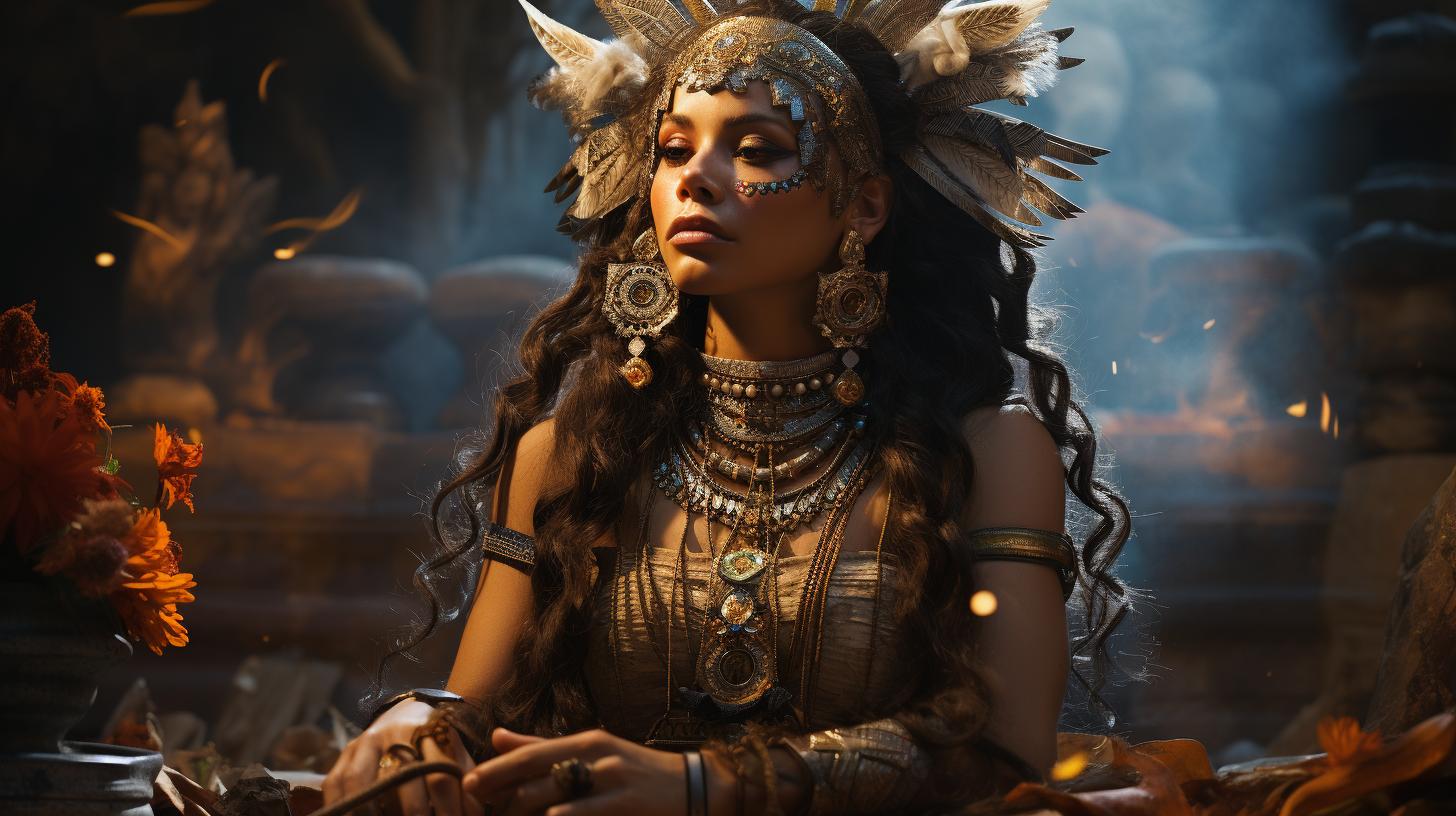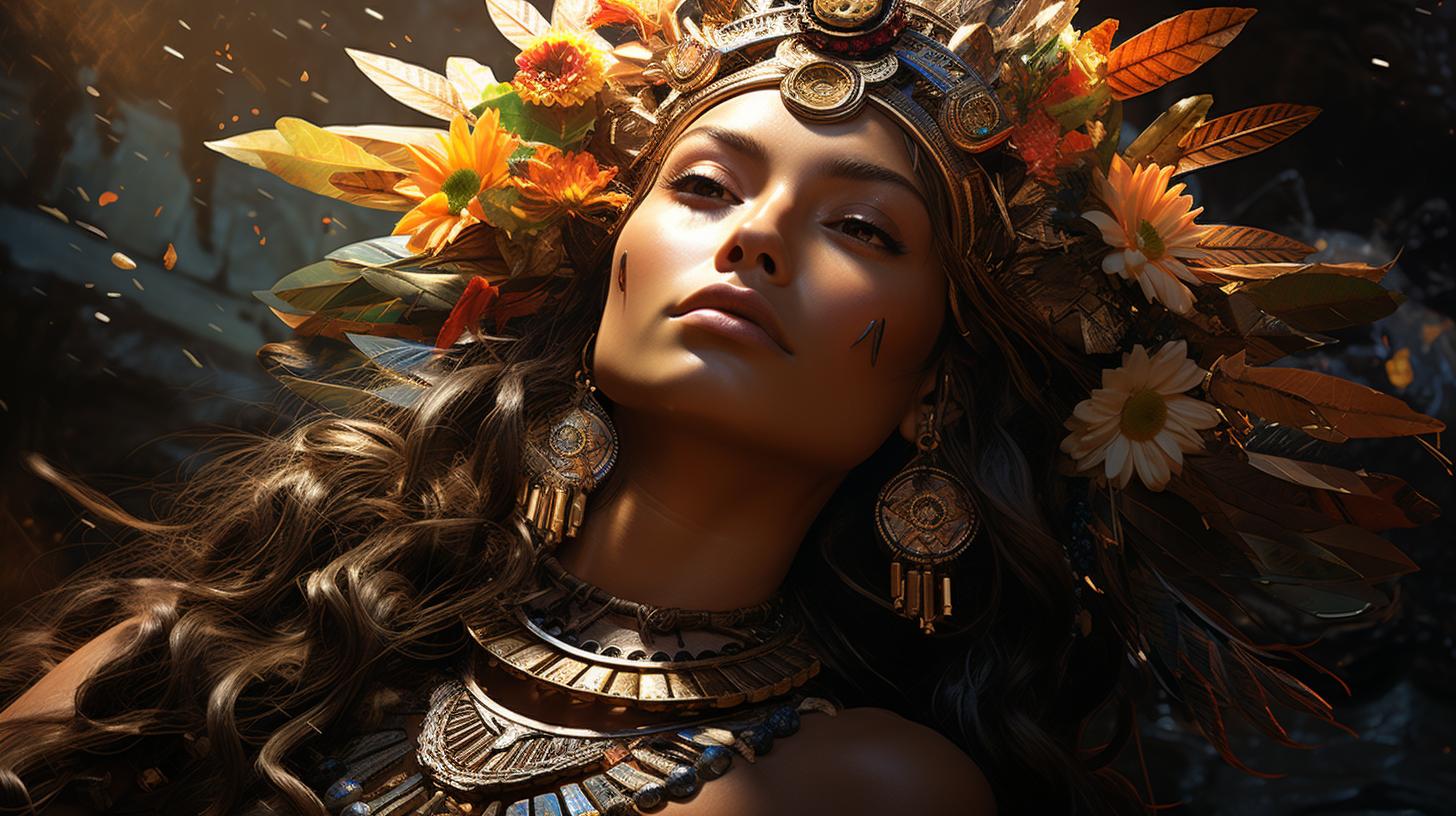Tlaltecuhtli: Exploring the Aztec Earth Goddess and her significance
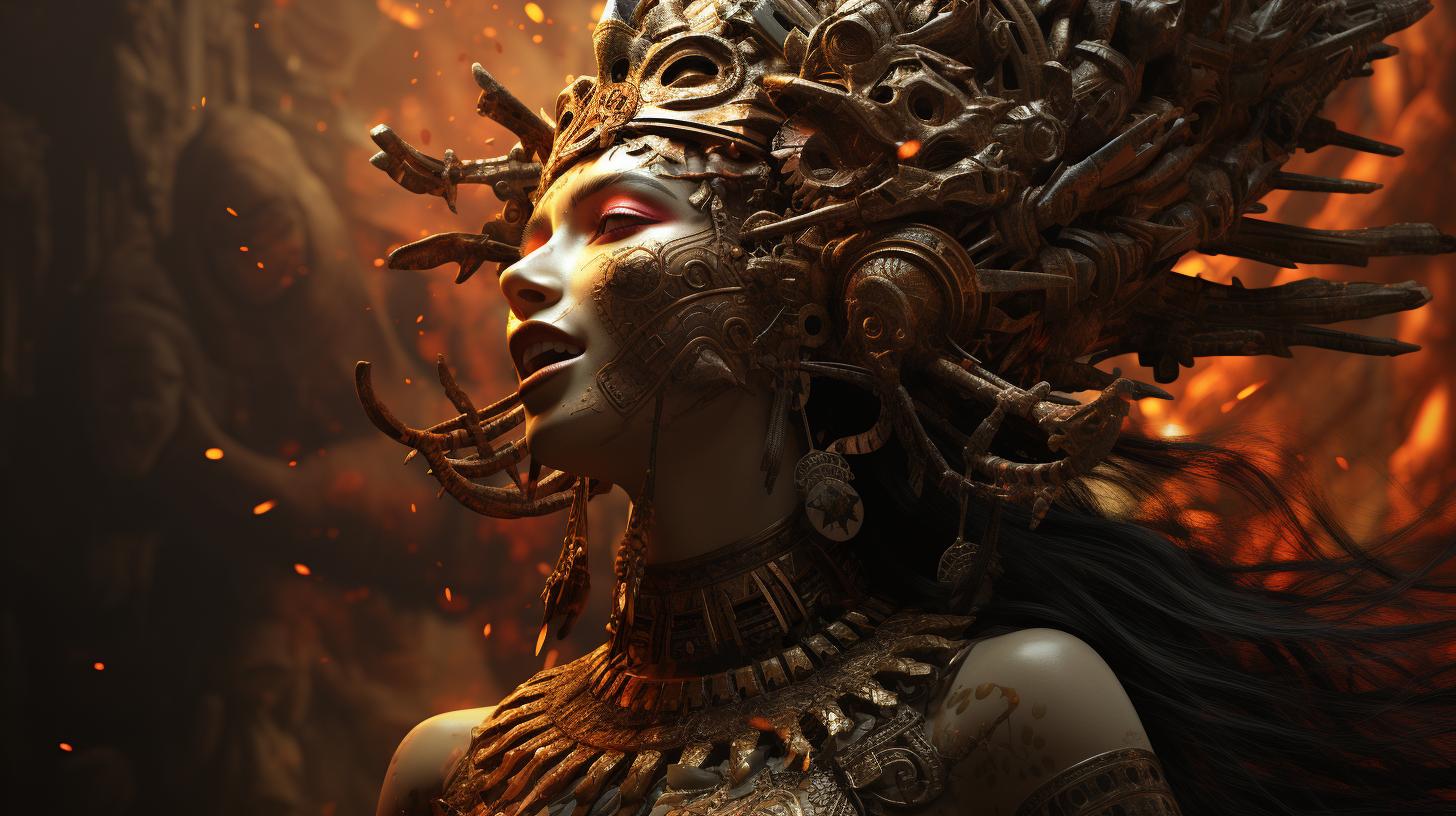
The Aztec civilization celebrated a rich pantheon of gods and goddesses. One significant deity was Tlaltecuhtli, the powerful earth goddess. According to mythological tales, Tlaltecuhtli played a crucial role in Aztec society, with offerings and rituals dedicated to her.
The discovery of the majestic Tlaltecuhtli monument has further highlighted the artistic mastery of the Aztecs. Today, Tlaltecuhtli’s influence can still be seen in modern interpretations and reverence for the earth goddess.
Join us as we delve into the captivating world of Tlaltecuhtli, exploring her origins, symbolism, and enduring legacy.
The Aztecs: Exploring Ancient Aztec Culture and Religion
The Aztecs were an ancient civilization with a rich and vibrant culture. They were known for their advancements in art, architecture, agriculture, and warfare. But perhaps one of the most intriguing aspects of Aztec society was their intricate religious beliefs.
The Aztecs had a complex pantheon of gods and goddesses, each with their own unique roles and attributes.
Aztec Gods: Deities of the Aztec Pantheon
The Aztec pantheon consisted of numerous gods and goddesses, representing various aspects of nature, society, and warfare. They were believed to have power over different aspects of life and were worshipped through rituals, offerings, and ceremonies.
Some of the notable Aztec gods included Huitzilopochtli, the god of sun and war, and Quetzalcoatl, the feathered serpent god.
Tlaltecuhtli: The Powerful Earth Goddess
Among the many deities revered by the Aztecs, Tlaltecuhtli held a significant place in their religious beliefs. As the powerful earth goddess, she was associated with the creation and destruction of life, fertility, and agriculture.
Tlaltecuhtli was often depicted as a fearsome and awe-inspiring figure, symbolizing the raw power and force of the Earth.
According to Aztec mythology, Tlaltecuhtli played a crucial role in the creation of the world.
She was believed to have given birth to the gods and humans, and her body represented the earthly realm. Tlaltecuhtli was both a life-giver and a devourer, embodying the cyclical nature of existence.
The Aztecs held Tlaltecuhtli in high reverence, offering sacrifices and rituals to honor her. They believed that by appeasing her, they could ensure an abundant harvest and maintain the balance between life and death.
Tlaltecuhtli’s influence extended beyond agriculture and fertility, as she was also associated with natural disasters and destruction.
Throughout Aztec society, representations of Tlaltecuhtli can be found in various forms of art and architecture.
Her immense and awe-inspiring presence was depicted through stone sculptures, mural paintings, and religious artifacts. These visual representations served as a reminder of her power and significance in the Aztec worldview.
Today, Tlaltecuhtli continues to captivate the imagination of scholars, artists, and enthusiasts alike. Her imagery and symbolism are an enduring testament to the profound impact of the Aztecs’ belief in the earth goddess.
Exploring the story of Tlaltecuhtli allows us to delve into the rich tapestry of Aztec culture and religion, revealing a deeper understanding of their profound reverence for the natural world.
Tlaltecuhtli’s Origins and Symbolism
The origins and symbolism surrounding Tlaltecuhtli, the powerful Earth Goddess, hold great significance in Aztec culture.
Exploring the mythological tales and representations sheds light on the meaning associated with this revered deity.
Mythological Tales: Stories of Tlaltecuhtli
Tlaltecuhtli’s mythological tales captivate our imagination and provide insight into the Aztec beliefs. Legend has it that she played a crucial role in the creation of the world, symbolizing both fertility and destruction.
According to the ancient Aztec cosmogony, Tlaltecuhtli emerged from the Primordial Waters, representing the primordial chaos and the physical manifestation of the Earth itself. She is often depicted as a monstrous being, with sharp fangs, gaping jaws, and symbols of water and fertility adorning her form.
One of the well-known myths surrounding Tlaltecuhtli tells the story of the sacrifice performed by the gods to create the sun and the moon. The gods, worried about the lack of light, decided to offer themselves as sacrifices to bring about the celestial bodies.
Tlaltecuhtli, overwhelmed by the potential loss of life, devoured the gods. However, they managed to escape and fought back, ultimately succeeding in their mission.
Representations and Images: Depictions of Tlaltecuhtli
The artistic representations of Tlaltecuhtli provide visual insights into her symbolism and role in Aztec society. Statues, codices, and murals depict her as an amalgamation of earth and water, emphasizing her connection to fertility and creation.
Artistic renditions often portray Tlaltecuhtli with her trademark features, including her reptilian attributes, clawed hands and feet, and a protruding womb symbolizing the earth’s fertility. Some depictions include her nursing infants, reflecting her nurturing aspect as the Earth Mother.
- Clawed hands and feet representing her connection to the earth.
- A gaping maw symbolizing her role as both creator and destroyer.
- Water motifs representing her association with the Primordial Waters.
- Symbolic elements highlighting her fertility and nurturing qualities.
These representations not only showcase the artistic skill of the Aztecs but also reinforce the cultural significance of Tlaltecuhtli as a central figure in their belief system.
Tlaltecuhtli in Aztec Society and Religion
Tlaltecuhtli, the powerful earth goddess, held immense significance in Aztec society and religion. Her presence was felt through the dedicated spaces and rituals that were established in her honor.
The Temple of Tlaltecuhtli: Sacred Spaces for the Goddess
The Aztecs built magnificent temples dedicated to Tlaltecuhtli, creating sacred spaces where they could worship and connect with the earth goddess.
These temples were constructed with meticulous detail and adorned with intricate carvings, reflecting the importance and reverence given to Tlaltecuhtli.
The layout of the temples often incorporated elements representing the earth, such as stone sculptures and symbols associated with fertility.
The architecture and design aimed to create a connection between the physical and spiritual realms, emphasizing the goddess’s role as the guardian of the earth.
Rituals and Sacrifices: Offerings to Tlaltecuhtli
Rituals and sacrifices played a significant role in Aztec religious practices, and Tlaltecuhtli was no exception.
Devotees would bring offerings to the temples, ranging from food and flowers to precious ornaments and artwork.
These rituals were conducted to maintain a harmonious relationship with Tlaltecuhtli and ensure the fertility and prosperity of the land.
Sacrifices, both human and animal, were also made as solemn acts of devotion, symbolizing the cyclical nature of life and death.
- Food offerings: Freshly harvested crops, fruits, and vegetables were presented to Tlaltecuhtli as a symbol of gratitude for her abundance and nurturing qualities.
- Floral tributes: Colorful flowers, particularly marigolds, were offered to Tlaltecuhtli as a symbol of beauty and renewal.
- Precious ornaments: Elaborate jewelry, crafted from gold, jade, and other precious materials, were offered as a sign of honor and respect to the goddess.
- Artwork and sculptures: Skilled artisans created intricate sculptures and artwork depicting Tlaltecuhtli, which were presented as offerings to celebrate her power and presence.
These rituals and offerings demonstrated the Aztecs’ deep reverence for Tlaltecuhtli and their belief in her ability to provide fertility, protect their crops, and ensure the well-being of their civilization.
Tlaltecuhtli Monument: Uncovering the Majestic Monolith
As we delve into the fascinating world of Tlaltecuhtli, the Aztec earth goddess, it is impossible to ignore the remarkable monument that bears her name. The Tlaltecuhtli monument, a true marvel of Aztec artistry, holds great significance in understanding the worship and reverence surrounding this powerful deity.
Discovery and Restoration: Unraveling the Secrets
The discovery of the Tlaltecuhtli monument proved to be an exciting moment for archaeologists and historians alike. Unearthing this majestic monolith shed light on the ancient Aztec civilization and the immense importance they placed on their earth goddess.
During the restoration process, careful attention was given to preserving the intricate details that make this masterpiece so extraordinary. The efforts to maintain the original beauty and integrity of the monument have allowed us to admire the craftsmanship and skill of the Aztec artisans.
The Tlaltecuhtli Monolith: A Masterpiece of Aztec Art
The Tlaltecuhtli monolith stands as a testament to the artistic prowess of the Aztec civilization. The colossal stone carving depicts the earth goddess in all her glory, showcasing her divine power and connection to the natural world.
Adorned with elaborate carvings and intricate details, the Tlaltecuhtli monolith is a breathtaking example of Aztec sculpture. The careful composition and symbolism embedded in the artwork provide invaluable insights into the religious beliefs and cultural practices of the Aztecs.
Today, as we study and appreciate the Tlaltecuhtli monolith, we gain a deeper understanding of the intricate relationship between the Aztecs and their revered earth goddess. It serves as a lasting testament to their rich heritage and the profound significance Tlaltecuhtli held in their society.
Tlaltecuhtli’s Influence and Legacy
Tlaltecuhtli, the powerful earth goddess, played a significant role in the Aztec calendar and cosmology. Her presence was deeply embedded in the religious and spiritual practices of the Aztecs, reflecting the fundamental importance of the earth in their worldview.
Tlaltecuhtli’s Role in Aztec Calendar and Cosmology
In the Aztec calendar, Tlaltecuhtli was associated with the 13th day sign, Ollin, symbolizing movement and change. This connection highlighted her role as a force of transformation and regeneration, representing the ever-changing nature of the earth’s cycles.
Within Aztec cosmology, Tlaltecuhtli was viewed as the mother of all gods and the primordial source of life. She was believed to govern the forces of nature, fertility, and agriculture, ensuring the prosperity and abundance of the Aztec people.
Her influence extended beyond the natural world and encompassed human existence as well. Tlaltecuhtli was regarded as a protector and nurturer, guiding the destiny of individuals and communities through her connection to the earth and its cycles.
Modern Interpretations and Reverence for the Earth Goddess
Today, Tlaltecuhtli continues to captivate the imagination and inspire artistic expressions. Artists, scholars, and enthusiasts explore her symbolism and significance, shedding new light on her ancient legacy.
Contemporary interpretations of Tlaltecuhtli emphasize her ecological importance and spiritual connection to the earth.
In a world increasingly aware of environmental challenges, the goddess serves as a powerful reminder of our responsibility to preserve and honor the natural world.
Reverence for Tlaltecuhtli is also expressed through cultural events, exhibitions, and ceremonies.
These celebrations provide an opportunity for individuals to reconnect with their indigenous roots and honor the ancient traditions that revered the earth goddess.
Tlaltecuhtli’s influence and legacy endure, reminding us of the profound interconnectedness between humans and the earth.
Through her ancient mythology and modern interpretations, the Aztec earth goddess continues to inspire and guide us toward a deeper understanding of our place in the natural world.
.











